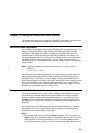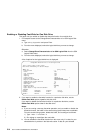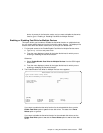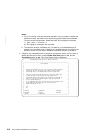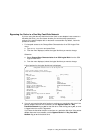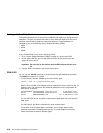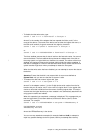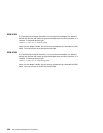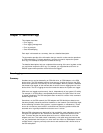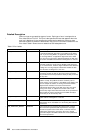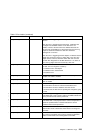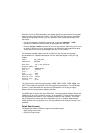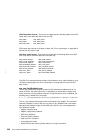v To disable the fast-write cache, type:
ssaraid -l ssaX -H -n Y -a fastwrite=off -a force=yes -u
where X is the number of the adapter that has reported the failure, and Y is the
name of the device. (The name of the device can be either the logical disk name, or
the SSA serial number.) A typical command line might be, therefore:
ssaraid -l ssa3 -H -n pdisk5 -a fastwrite=off -a force=yes -u
or:
ssaraid -l ssa3 -H -n 2327340C423235K -a fastwrite=off -a force=yes -u
The force attribute ensures that all data is lost from the fast-write cache. You cannot
recover that data. The force attribute also prevents the reattachment of the disk to
the using system; no logical disk can, therefore, be created. The actions of the force
attribute are important, because the lost data might include file system metadata. If
that data is damaged as a result of the fast-write cache failure, further data loss and
system crashes might occur when you attempt to restart the file system.
When the fast-write cache has been disabled, you can attempt to recover the data on
the device.
Attention: Ensure that the disk is not returned with its current use defined as
System Disk, until you are sure that the file system is safe.
v To reattach the disk and create a logical disk, type:
ssaraid -l ssaX -H -n Y -a use=system -k Z -d
where X is the adapter number, Y is the 15-digit device serial number from the list
function that you ran earlier, and Z is the name of a logical disk. For the logical disk,
choose a name that is different from the names of existing logical disks. This action
ensures that the logical disk that you have created is not automatically attached if the
using system crashes and reboots.
When this operation has completed, a message is displayed. This message tells you
that the logical disk (Z) has been attached, and that the device (/dev/Z) can be
accessed. For example:
ssaraid -l ssa3 -H -n 2327340C228635K -a use=system -k ZZDataRecovery -d
2327340C228635K attached
ZZDataRecovery Available
where /dev/ZZDataRecovery is the device.
You can now use standard commands (for example, fsck and fsdb) to attempt to
repair any possible damage to the file system, before you attempt data recovery.
Chapter 10. Using the Fast-Write Cache Feature 219
|
|



